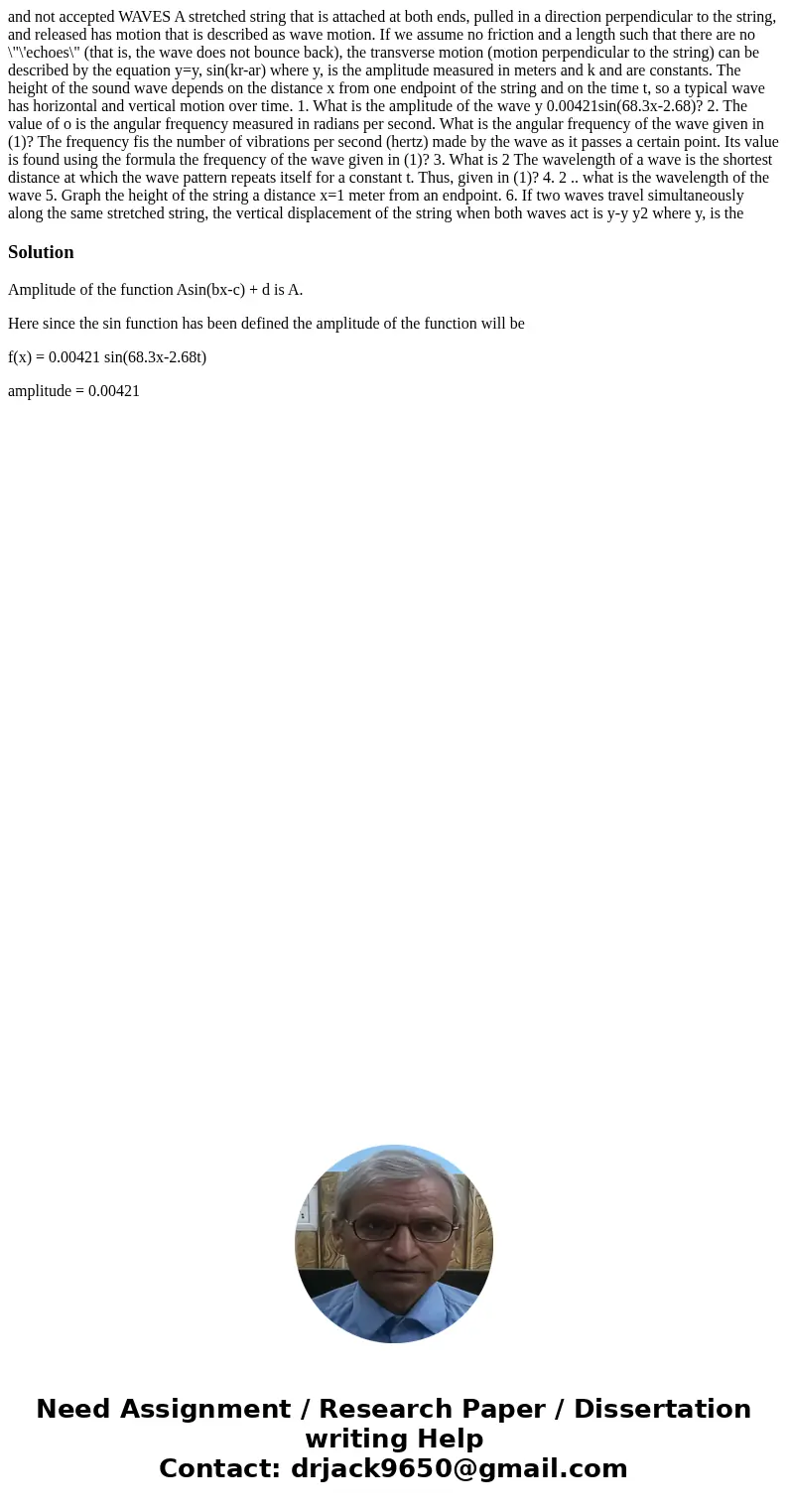and not accepted WAVES A stretched string that is attached a
and not accepted WAVES A stretched string that is attached at both ends, pulled in a direction perpendicular to the string, and released has motion that is described as wave motion. If we assume no friction and a length such that there are no \"\'echoes\" (that is, the wave does not bounce back), the transverse motion (motion perpendicular to the string) can be described by the equation y=y, sin(kr-ar) where y, is the amplitude measured in meters and k and are constants. The height of the sound wave depends on the distance x from one endpoint of the string and on the time t, so a typical wave has horizontal and vertical motion over time. 1. What is the amplitude of the wave y 0.00421sin(68.3x-2.68)? 2. The value of o is the angular frequency measured in radians per second. What is the angular frequency of the wave given in (1)? The frequency fis the number of vibrations per second (hertz) made by the wave as it passes a certain point. Its value is found using the formula the frequency of the wave given in (1)? 3. What is 2 The wavelength of a wave is the shortest distance at which the wave pattern repeats itself for a constant t. Thus, given in (1)? 4. 2 .. what is the wavelength of the wave 5. Graph the height of the string a distance x=1 meter from an endpoint. 6. If two waves travel simultaneously along the same stretched string, the vertical displacement of the string when both waves act is y-y y2 where y, is the 
Solution
Amplitude of the function Asin(bx-c) + d is A.
Here since the sin function has been defined the amplitude of the function will be
f(x) = 0.00421 sin(68.3x-2.68t)
amplitude = 0.00421

 Homework Sourse
Homework Sourse